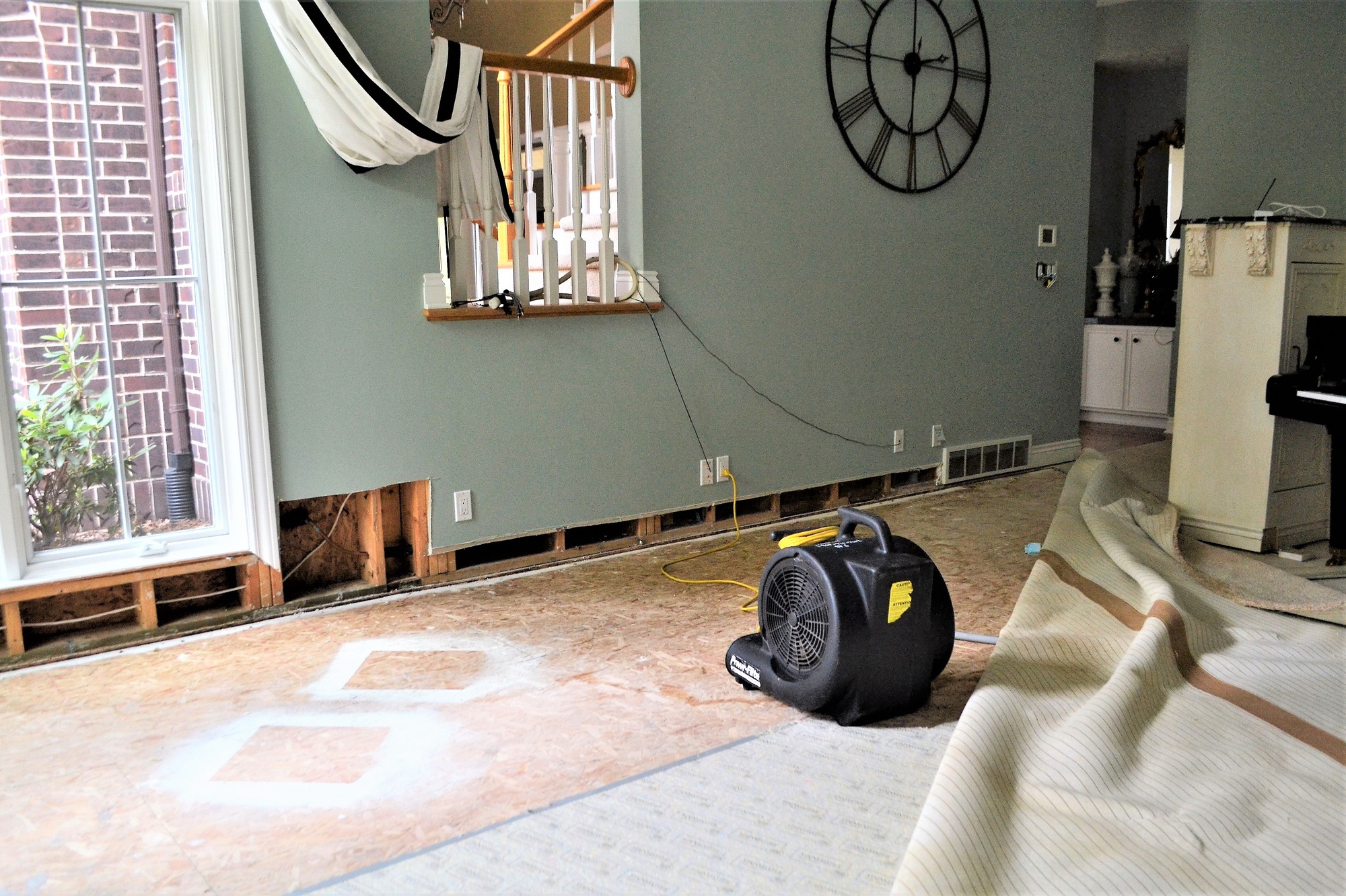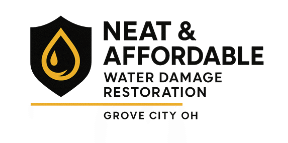When water unexpectedly enters your property in Grove City, OH, acting quickly is crucial. Effective water removal and professional structural drying Grove City, OH, are vital steps to protect your building from long-term damage. Our team focuses on thoroughly drying your home or business, preventing serious problems like mold growth and weakening of building materials. We bring experience and precise methods to every job, ensuring your property is returned to a safe, dry condition.

Understanding Structural Drying
Structural drying is more than just drying wet surfaces. It is a precise process that removes moisture from building materials like wood, drywall, concrete, and insulation. Water can soak deep into these materials, and simply airing out a room or using fans is often not enough. Our approach uses specialized equipment and scientific principles to pull hidden moisture out of the structure. This prevents future issues that can cost a lot of money and time to fix.
This process relies on understanding how moisture behaves within different building components. Each material has unique properties regarding how it absorbs and releases water. For example, wood can hold a significant amount of moisture, and if not dried correctly, it can warp, crack, or even rot. Drywall, on the other hand, can quickly become saturated and lose its structural integrity, making it a prime candidate for mold growth if left damp. Our methods target these specific material characteristics to ensure a complete and effective dry-out.
Why Professional Structural Drying is Essential
Ignoring water damage or attempting to dry a property without professional tools can lead to severe consequences. Mold can start to grow within 24 to 48 hours in damp conditions, causing health concerns and further damage to your property. Wood floors can buckle, walls can swell, and foundations can weaken. These issues compromise the safety and value of your property. Our structural drying services prevent these costly problems by removing moisture completely and efficiently.
The long-term effects of improper drying extend beyond visible damage. Hidden moisture can lead to persistent musty odors, degrade indoor air quality, and attract pests. Over time, the structural integrity of your building can be compromised, leading to costly repairs and even requiring demolition in extreme cases. Professional intervention ensures that all affected areas, even those not immediately visible, are thoroughly dried and restored to their pre-loss condition, protecting your investment and the well-being of occupants.
The Science Behind Effective Drying
Our structural drying process is based on psychrometry, the science of how air and water vapor interact. We control temperature, humidity, and airflow to create the perfect conditions for drying. This involves using powerful dehumidifiers to remove moisture from the air, and high-velocity air movers to circulate dry air over wet surfaces. We also use moisture meters and thermal imaging cameras to find hidden moisture and track the drying progress accurately. This scientific approach ensures no moisture is left behind.
Understanding vapor pressure differentials is also key. Water naturally moves from areas of high vapor pressure (wet materials) to areas of low vapor pressure (dry air). Our equipment creates a strong vapor pressure differential, effectively pulling moisture out of saturated building components and into the air, where it is then removed by dehumidifiers. This accelerated evaporation is critical for preventing secondary damage and ensuring a rapid return to normal conditions.
Our Detailed Structural Drying Process
We follow a systematic approach to ensure thorough and effective structural drying. Each step is carefully managed to achieve optimal results and prevent future issues.
1. Immediate Assessment and Inspection
Our first step involves a comprehensive assessment of the water damage. We use advanced moisture detection tools, including thermal imaging cameras and hygrometers, to locate all affected areas, even those not visible to the naked eye. This helps us understand the extent of water intrusion and identify all materials that have absorbed moisture. We create a detailed moisture map of your property, pinpointing exactly where our efforts are needed most. This initial inspection allows us to develop a precise drying plan tailored to your specific situation.
2. Water Extraction
After the assessment, we focus on removing any standing water. We use powerful pumps and extractors to quickly pull out large volumes of water from carpets, subfloors, and other surfaces. Removing as much bulk water as possible is critical because it significantly speeds up the drying process. The less water there is to evaporate, the faster the structural drying can proceed, reducing the risk of mold growth and further damage to your property in Franklin County, Ohio.
3. Strategic Equipment Placement
Once the bulk water is gone, we strategically place specialized drying equipment. This includes industrial-grade dehumidifiers, which pull moisture from the air, and high-velocity air movers, which create airflow across wet surfaces to accelerate evaporation. We select the right type and number of machines based on the size of the affected area and the amount of moisture present. Our goal is to create a controlled drying environment that efficiently removes moisture from all structural components.
Different types of dehumidifiers are used depending on the specific conditions. Low Grain Refrigerant (LGR) dehumidifiers are highly effective in removing moisture in cooler, drier environments, while desiccant dehumidifiers are ideal for very humid or cold conditions where LGR units might struggle. The precise placement of air movers ensures that dry air circulates evenly, targeting moisture in walls, ceilings, and floors, driving it into the air for the dehumidifiers to capture.
4. Continuous Monitoring and Documentation
Drying is not a set-it-and-forget-it process. Our team regularly monitors the drying progress using moisture meters and hygrometers. We track temperature, humidity levels, and moisture content in materials daily. This data helps us adjust our equipment and drying strategy as needed to ensure efficient and complete drying. We document all readings and progress, providing a clear record of the drying process and ensuring we meet industry standards for dryness.
This continuous monitoring allows us to make informed decisions throughout the drying cycle. If certain areas are drying slower than others, we can reposition equipment or introduce additional specialized drying tools. This meticulous attention to detail ensures that no hidden pockets of moisture are missed, which is fundamental to preventing long-term issues like secondary damage and microbial growth. Our comprehensive documentation provides transparency and accountability, confirming that the drying goals have been met.
5. Final Verification and Restoration
Once moisture readings confirm that all affected materials have reached appropriate dry standards, we begin the final verification process. We ensure that the property is completely dry and safe. Our team then removes all drying equipment. If any materials were too damaged to dry effectively, we can assist with planning for their replacement, ensuring your property is fully restored to its pre-damage condition. Our commitment is to leave your property in Grove City, OH, thoroughly dry and ready for any necessary repairs.

Advanced Equipment for Comprehensive Drying
Our commitment to effective structural drying involves using a range of advanced equipment designed for specific drying challenges. These tools allow us to tackle moisture in various materials and environments.
- Low Grain Refrigerant (LGR) Dehumidifiers: These powerful machines remove significant amounts of moisture from the air, even in cooler conditions. They are highly efficient and critical for large-scale drying projects, helping to quickly reduce humidity levels indoors.
- Desiccant Dehumidifiers: Ideal for very low humidity requirements or colder temperatures, desiccant dehumidifiers use a chemical absorbent to pull moisture directly from the air. They are particularly useful for drying dense materials or in environments where typical dehumidifiers are less effective.
- Air Movers/Fans: High-velocity air movers circulate dry air over wet surfaces, accelerating the evaporation process. Different types exist, including axial fans for large areas and centrifugal fans for targeted drying of walls and floors.
- Moisture Meters: Both non-invasive and invasive moisture meters are used to detect and quantify moisture levels within building materials. Non-invasive meters help identify damp areas without causing damage, while invasive meters provide precise readings for a detailed understanding of moisture content.
- Thermal Imaging Cameras: These cameras detect temperature differences that indicate the presence of hidden moisture behind walls or under flooring. They allow us to identify concealed water damage quickly and accurately, guiding our drying efforts to unseen affected areas.
- Specialty Drying Equipment: This includes tools like floor mat drying systems for hardwood floors, wall cavity dryers for drying inside walls without demolition, and injecti-dry systems for targeted drying of specific areas. These tools help save materials that might otherwise need to be removed and replaced.
Understanding Moisture in Building Materials
Different building materials react uniquely to water, impacting how they absorb and release moisture. Understanding these differences is crucial for effective structural drying. Porous materials like drywall and insulation absorb water quickly and can become saturated, making them susceptible to mold if not dried rapidly. Wood, while also porous, absorbs water more slowly but can retain it for longer periods, leading to warping, swelling, and rot if not properly dried.
Non-porous materials such as concrete and tile may not absorb water as readily, but moisture can still penetrate cracks or seep underneath, leading to hidden pockets of dampness. Our expertise includes knowing the drying characteristics of various materials and applying the appropriate techniques and equipment to ensure thorough drying without causing further damage to the structure. This material-specific approach is a cornerstone of our effective structural drying services.
Why Choose Professional Structural Drying
Choosing a professional team for structural drying in Grove City, OH, offers peace of mind. We bring the right knowledge, equipment, and experience to handle water damage effectively. Our goal is to protect your property from long-term issues and help you get back to normal as quickly as possible. We adhere to strict industry standards, ensuring that every job is completed with the highest level of care and precision. Our commitment is to deliver reliable and useful service to our community.
